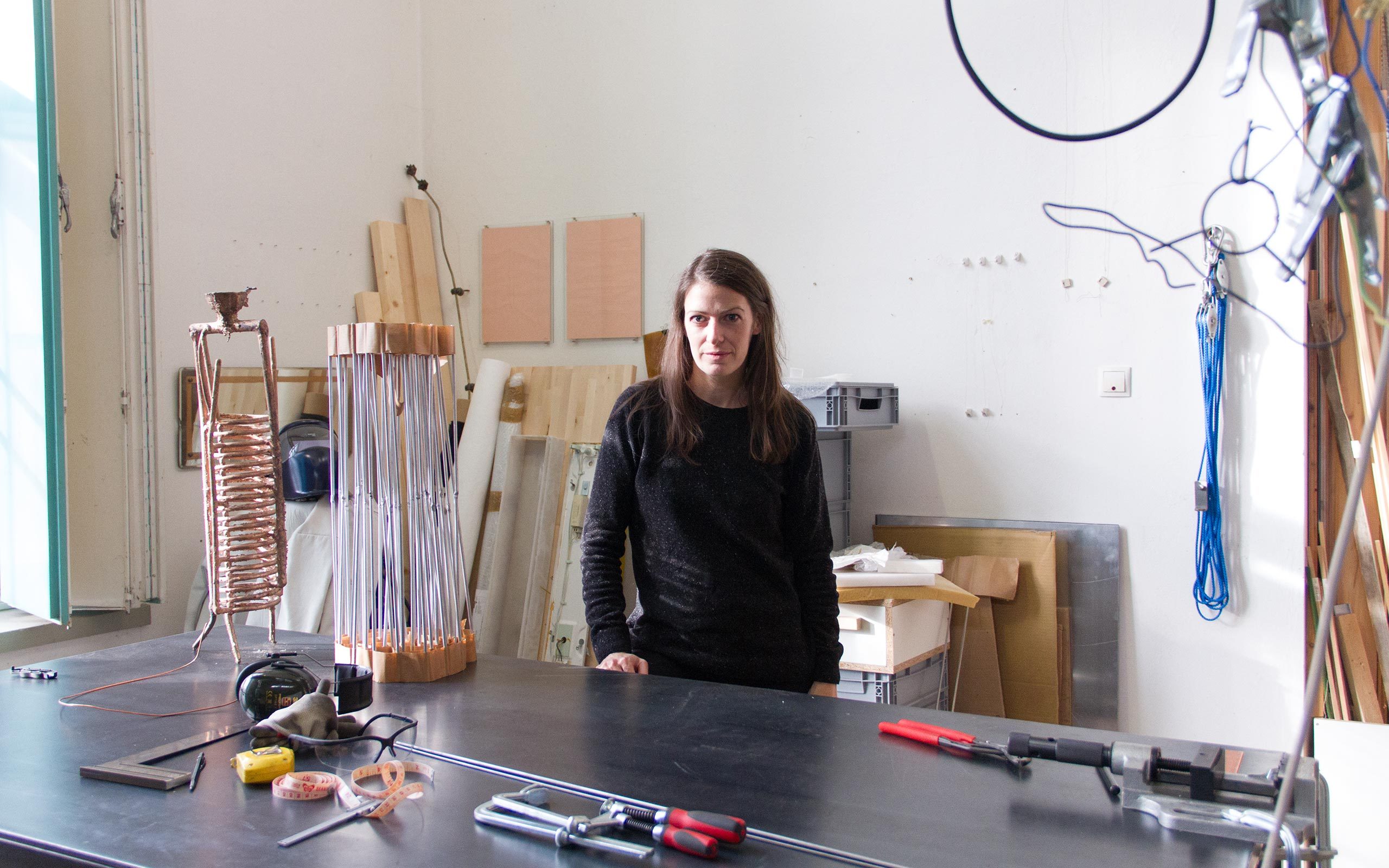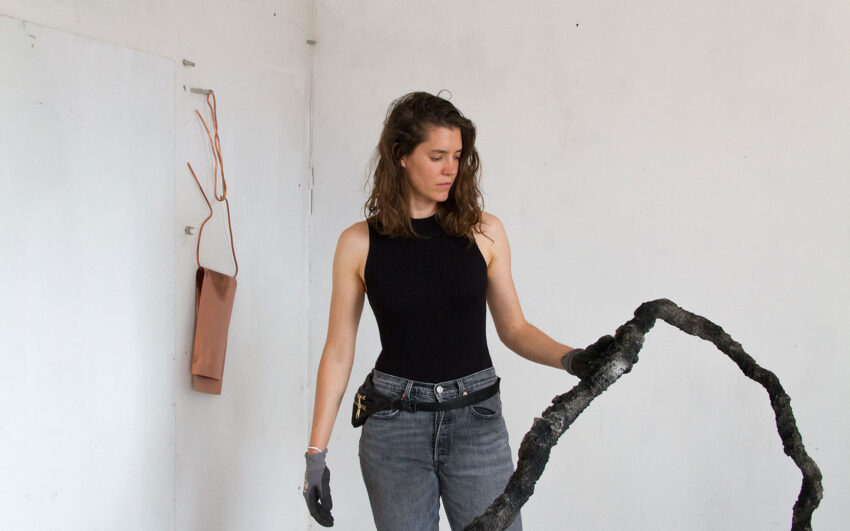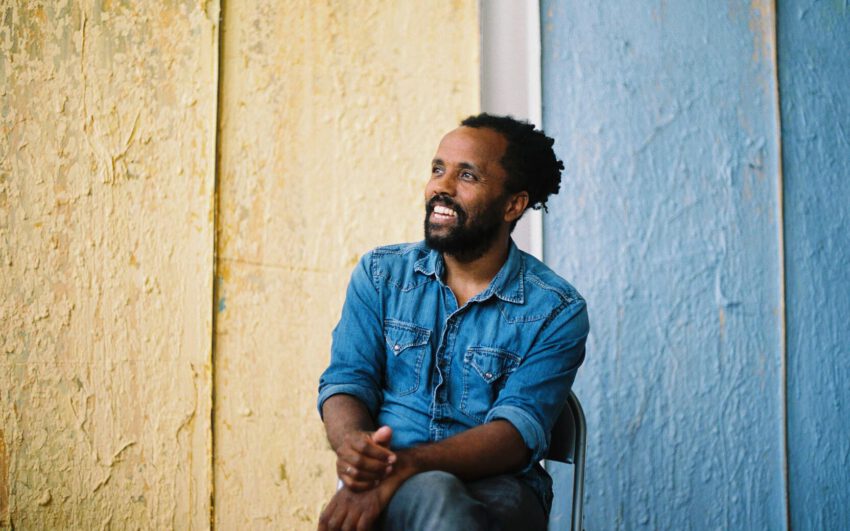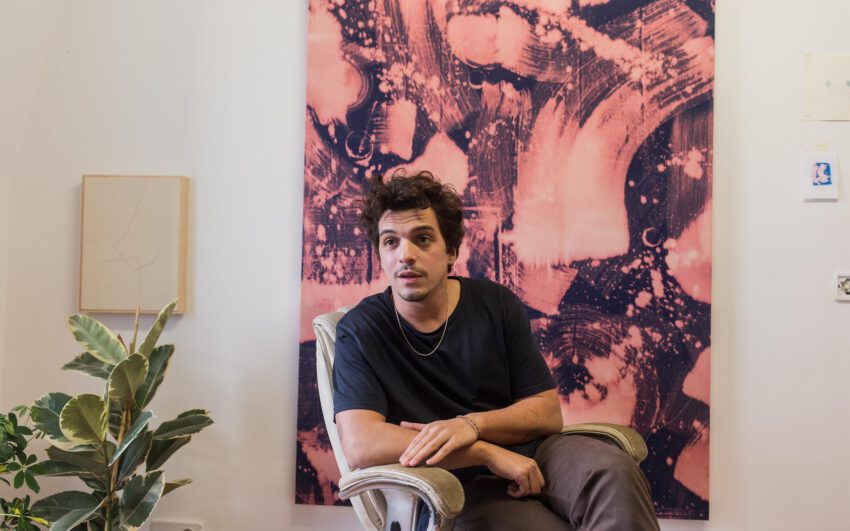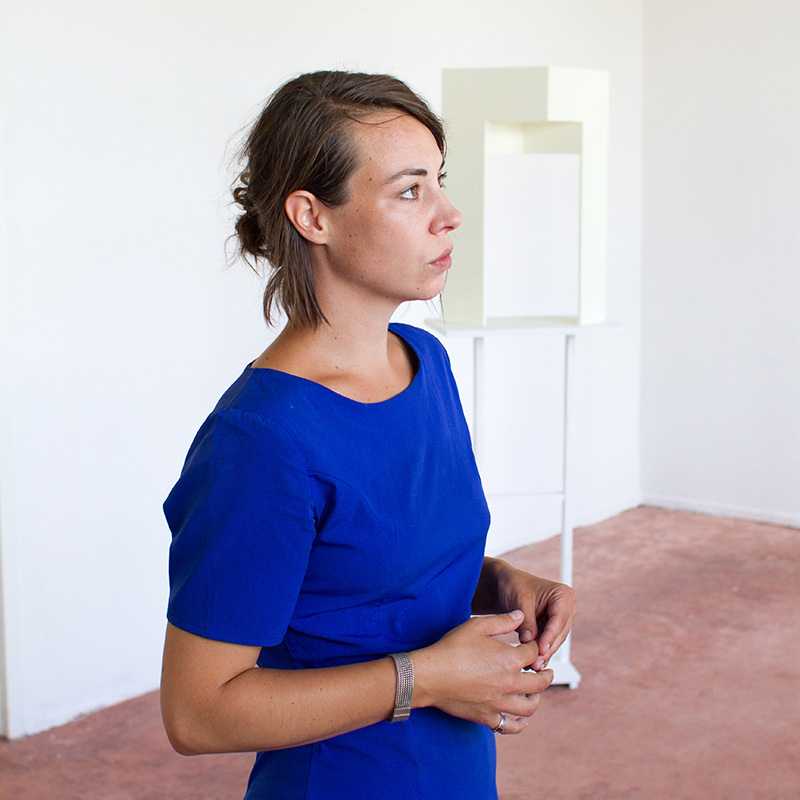Judith Fegerl produces sculptures and installations that intervene in the structures of the used materials as well as the existing exhibition spaces. By means of electrical currents energy and tension in objects are condensed and expand the term sculpture into an alternative condition. The energy sources of the art institutions are drawn upon and newly worked into the architecture. Fegerl’s works leave traces and are challenging to both interested viewers and to the artist herself.
Judith, your artistic work references various schools of thought ranging from computer science and network art to the topic of physical extension and the construction of machines. Which approach are you currently working with?
For me everything is very much connected, all areas are linked: machinery, architecture (also digital), and man. Interstices and links determine each other, create dependencies and hierarchies or free themselves. I distill these conditions so that they can be seen separated from the ambient noise. At the moment, I work simultaneously on the micro- and macro-level. I build innumerable minute building parts for drawings that are so small they can only be seen from under a magnifying glass. In contrast there exists a permanent intervention that represents the structural stress of the entire building.
You produce objects that are often electrically charged and which may have a high voltage, creating a potentially dangerous situation for the viewer. What is the intention behind it?
Electricity is a primary element in my work. Although this form of energy is one that has impacted our lives in a profound way for 180 years it still retains a certain degree of indeterminacy. The handling of electricity is extremely daunting outside of the safe channels of household appliances. Endeavors to control this force and its unpredictability are the reason why electricity is ascribed the female gender. I try to compress energy and tension and to demonstrate the time component in the process. The sculptures moment, last shown in the solo exhibition in charge at Taxispalais Kunsthalle Tirol and at 21er Haus for the BC21 ArtAward, consist of massive steel parts held together by specially produced electromagnets. Electromagnets manifest their magnetic power only under the action of electricity. If the electric current is interrupted, the sculpture collapses. This possibility creates an immediate relationship with the object that has sometimes nothing to do with art reception. Looking at the sculpture becomes the experience of a fleeting moment. Furthermore, the alternative condition of the sculpture is automatically considered, namely the possibility of collapse. This places the sculpture, space, and time, upon an axis.
Does that mean that collectors of your work have to take into account a certain security risk when they install your art in their homes?
A designated socket is needed for the installation if a collector decides to acquire my work moment (note: works from this series are presently represented in three institutional collections). Furthermore, the work requires some space in order to unfold itself from its minimalist character; on the other hand a power outage may possibly cause the individual parts to break apart. It is intended that the work not always be presented in its active state. The resting state, that is when the work is dormant and separated into its component parts, is an acknowledged form of this work and is therefore an option with which to live with the artwork. The decision is made by the individual’s temporal and kinetic inclination.
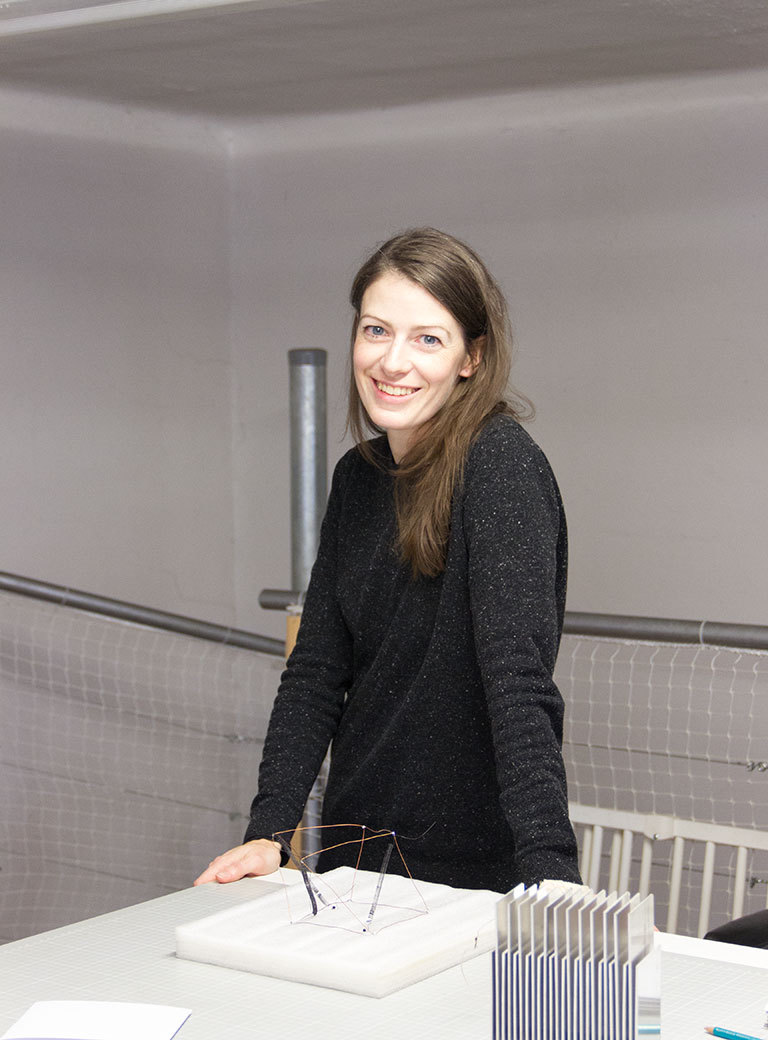
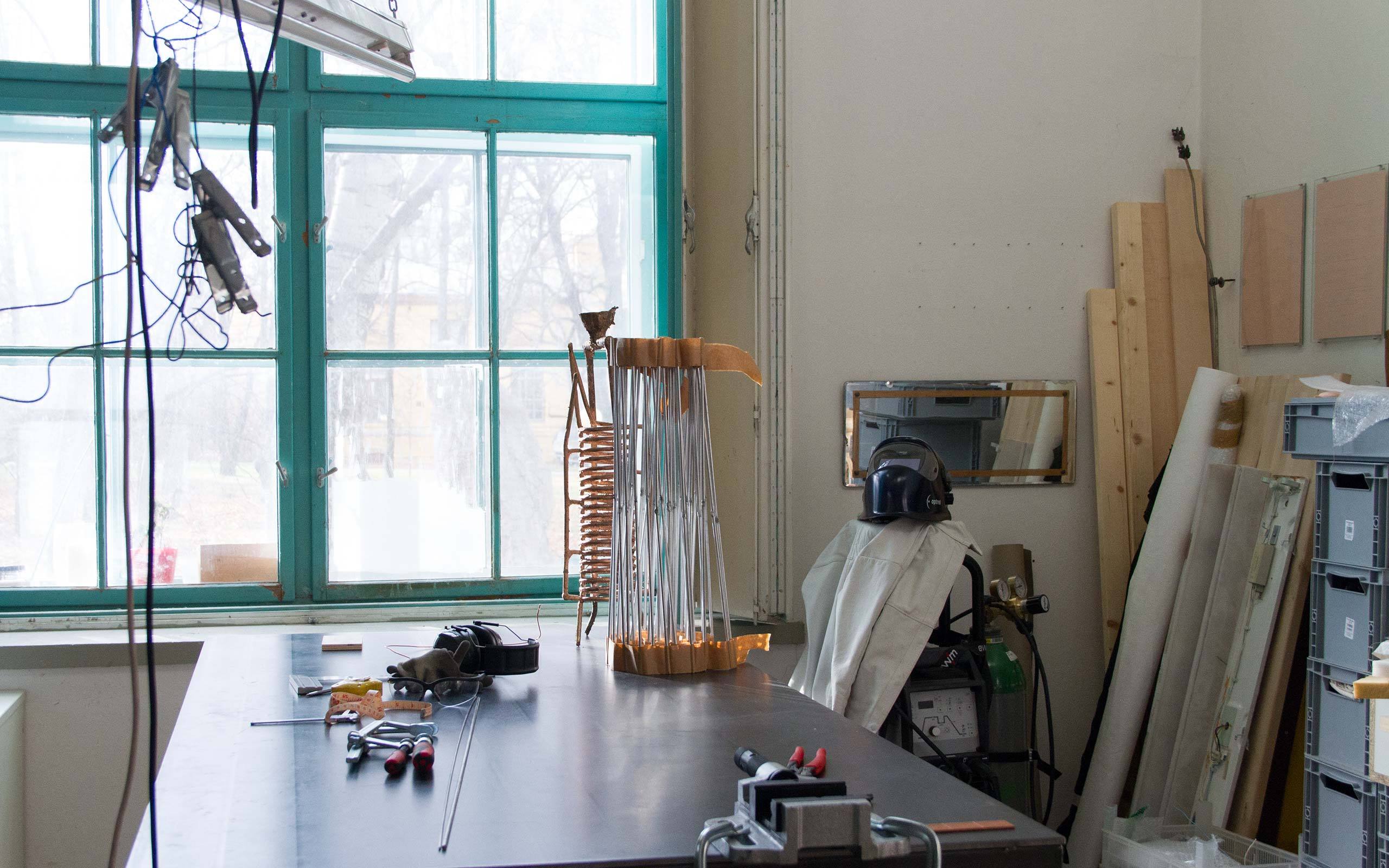
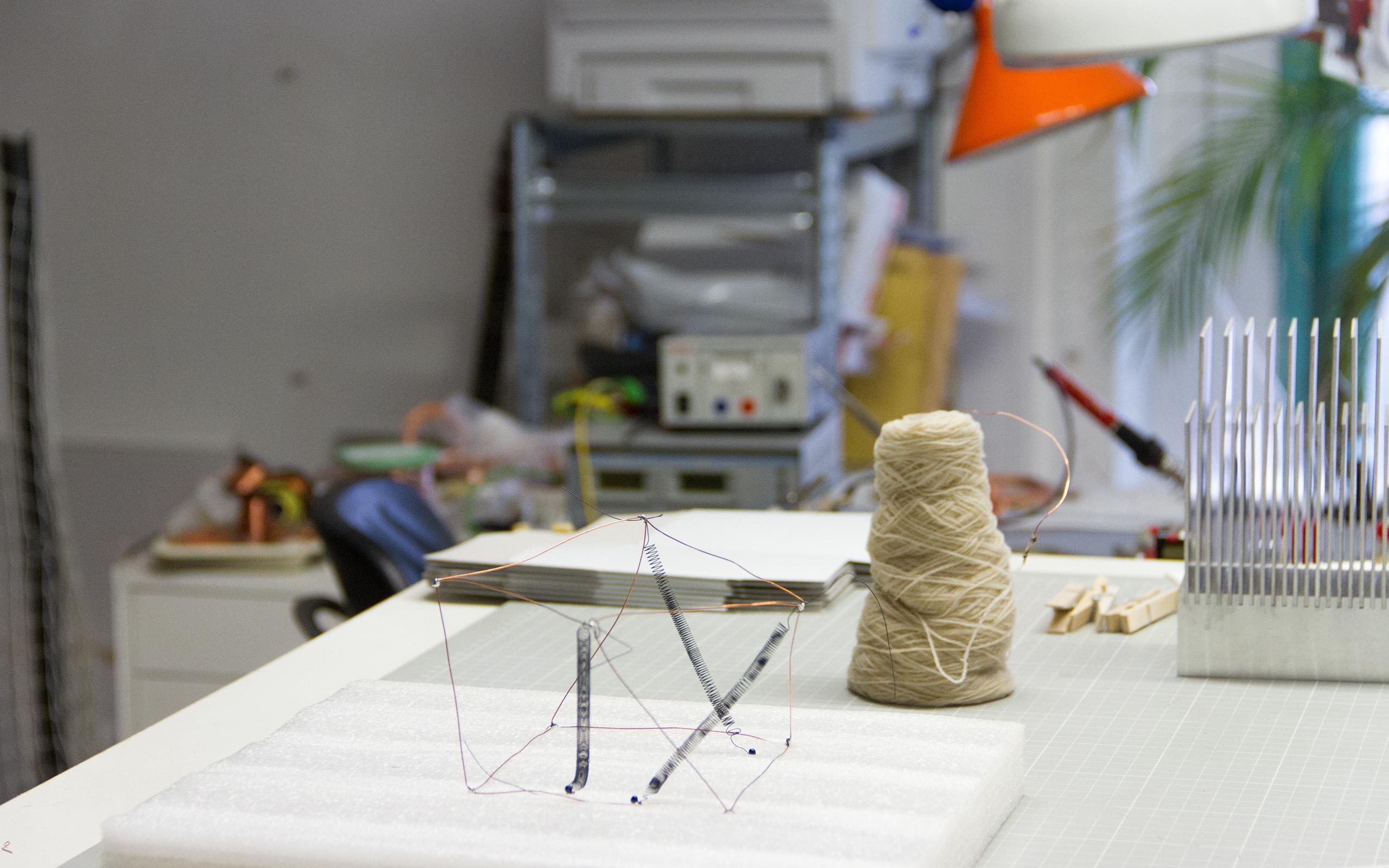
Contrary to being charged, entire art institutions are discharged by you. In the process cable paths and connections become visible. Why this pinpointing?
I consider the museum a neutral space that functions like an intensive care station for artworks. There are universal interfaces, compatible standards. Works are positioned, lit, connected, secured, monitored, recorded, and after a certain time packed up, discharged and dismantled. The machinery of the business and the structural conditions are part of my observations and the resulting works. For the work self I deprived an entire art space of all electrical power lines, lights, outlets, monitors, workstations, and other fittings, rendering it dark and raw. It was important to me to show the space as an energy providing shell. The installation cauter takes as a theme the potential of electrical cables. When the power current is applied the cables become so overloaded that they burn through the wall and drawings emerge. During the preparation of such an installation, I collaborate closely with the institutions. This way I get insight into spaces that are usually not accessible, that’s exciting!
You’ve been invited by the Landesgalerie Niederösterreich to integrate an installation into the architecture. What can you tell us about it?
I was asked to develop a piece that deals with the museum itself and therefore I have been involved very early in the initial construction phases. I was able to study the planned gestalt and form quite intensively. I compare the form of the museum with the ideal-typical cube and ask the question, what amount of kinetic energy will be necessary, departing from the cube, to achieve the building shape of the museum. Three different objects will be integrated in the walls of the museum which through their own form are to provide information about the virtually stored energy in the museum building. Here, too, I provide an image about an alternative state, a potential form inherent in the actual form. A second part of the work consists of bronze casts of tightened tension springs.
Your works are very technical and you need in part heavy and complex material that can’t always be easily found. Where do you get your materials?
I collect, materials and processes. I document a lot and go through the world with very open eyes. I am fascinated by details, often really small things that set in motion cascades of thoughts inspiring entire works. Of course I research a lot and learn new skills when concrete tasks demand it. I rarely fall back on off-the-shelf solutions. For the most part my requirements are so specific that I develop custom-made parts with companies or produce them myself. Regarding the materials, I am interested in specific properties, technical applications that charge themselves up with new content for me. Examples are waxed paper or porcelain. Some materials I have to hunt for because they are hard to find. Over time, a material database has developed against which new finds are checked.
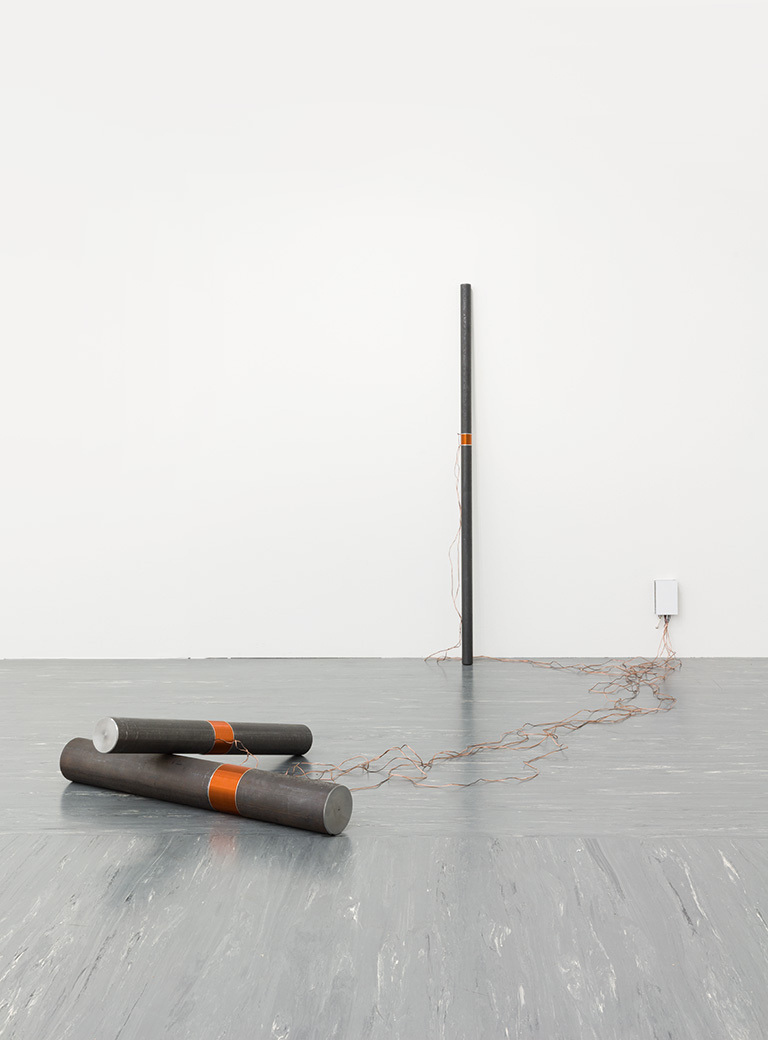
Judith Fegerl, moment, 2017
3 parts, solid steel rods, electromagnets, wires, power supply
(c) Belvedere Wien, Photo: Johannes Stoll
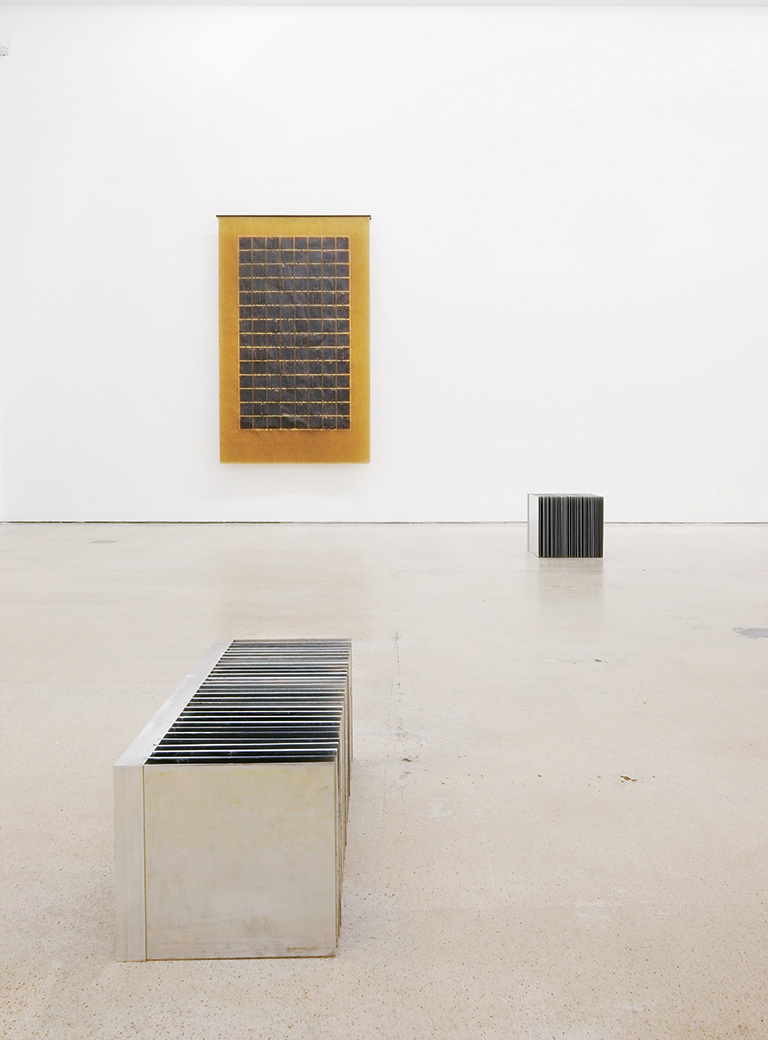
in charge, Taxispalais Kunsthalle Tirol, 2017; easy axis, 2016 and still, 2013
Courtesy Galerie Hubert Winter, Wien/Vienna
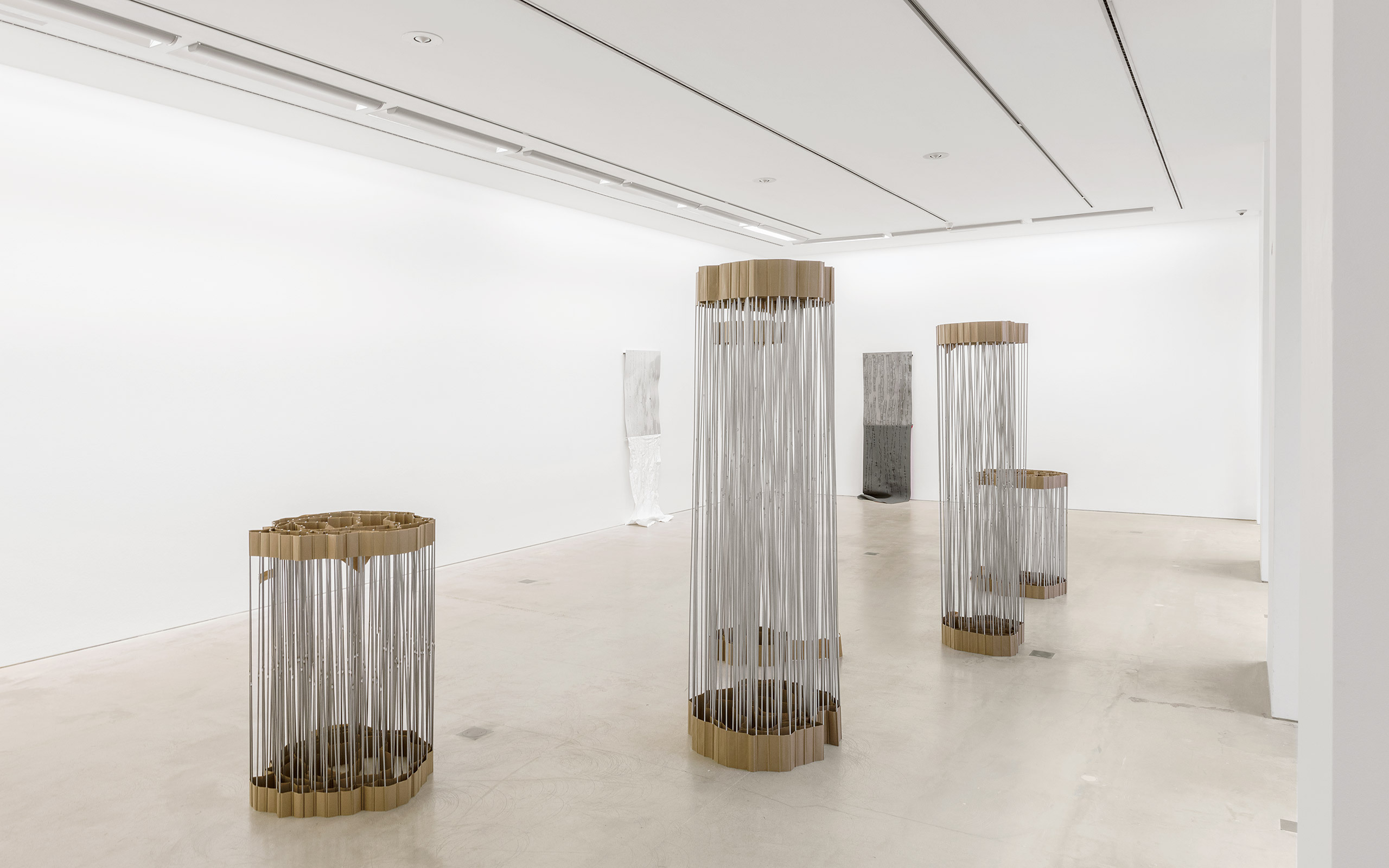
Judith Fegerl, in charge, Taxispalais Kunsthalle Tirol, 2017; batch, 2017 and beads, 2017
Courtesy Galerie Hubert Winter, Wien/Vienna, Photo: Gregor Sailer
What requirements must your studio provide in order for you to be able to realize your work?
My studio is like a laboratory, therefore it must be functional and well equipped. I do not need a lot of space, but everything must be well organized. Since I work with many different media, a multiplicity of equipment is needed to experiment with new things. Over time, a variety of small machines has accumulated. There is a station for light soldering and for electrical drawings, a sewing station with two sewing machines, a cutting table, and my computer desk. For coarser work there is a metal workshop with a range of different saws and a large table for building, heavier soldering and welding. I would really like to have my own kiln to fire ceramics. Perhaps it will materialize. In any case, my studio must be a place of well being, and of course lots of light is essential.
How high is the experimental expense in your work? What is being tested beforehand and how long?
Installations like cauter or reservoir were preceded by expansive test phases. They can take more than a year. Initially, I have a certain idea how I want to use a material or work on a theme. During the first trials I might be surprised how a material reacts or overreacts. And it is not completely free of dangers, a couple of times I’ve had my fingers too close to a live cable or connection. This is special for works that involve open electrical currents or unstable sockets; the safety issues for such exhibitions have to be addressed beforehand. Some works need long-term tests to ensure there will be no problems during operation. It is quite elaborate, therefore it is particularly important to act more spontaneously with drawings and smaller objects. When I draw I am very close to my thoughts and can experiment quickly using the dynamic of the moment. In the process new things arise that inscribe themselves into larger works.
Your technical way of working appears quite “austere” and the results of this “austerity” are often very minimalist objects that seem rather fragile, yet have an emotive quality. Since your work concerns your own experiences and processes, is the “austerity” a way of avoiding the potential for “kitsch”?
I admire both opulence and abundance in art. It is something I like to see and enjoy. A certain artistic proliferation can communicate an enormous amount of unconstrained energy. However, that is not my way. The way I begin my work can be compared to a distillation process in which everything is a condensation of its essence, this affords my work its minimalist character and reflects all decision processes.
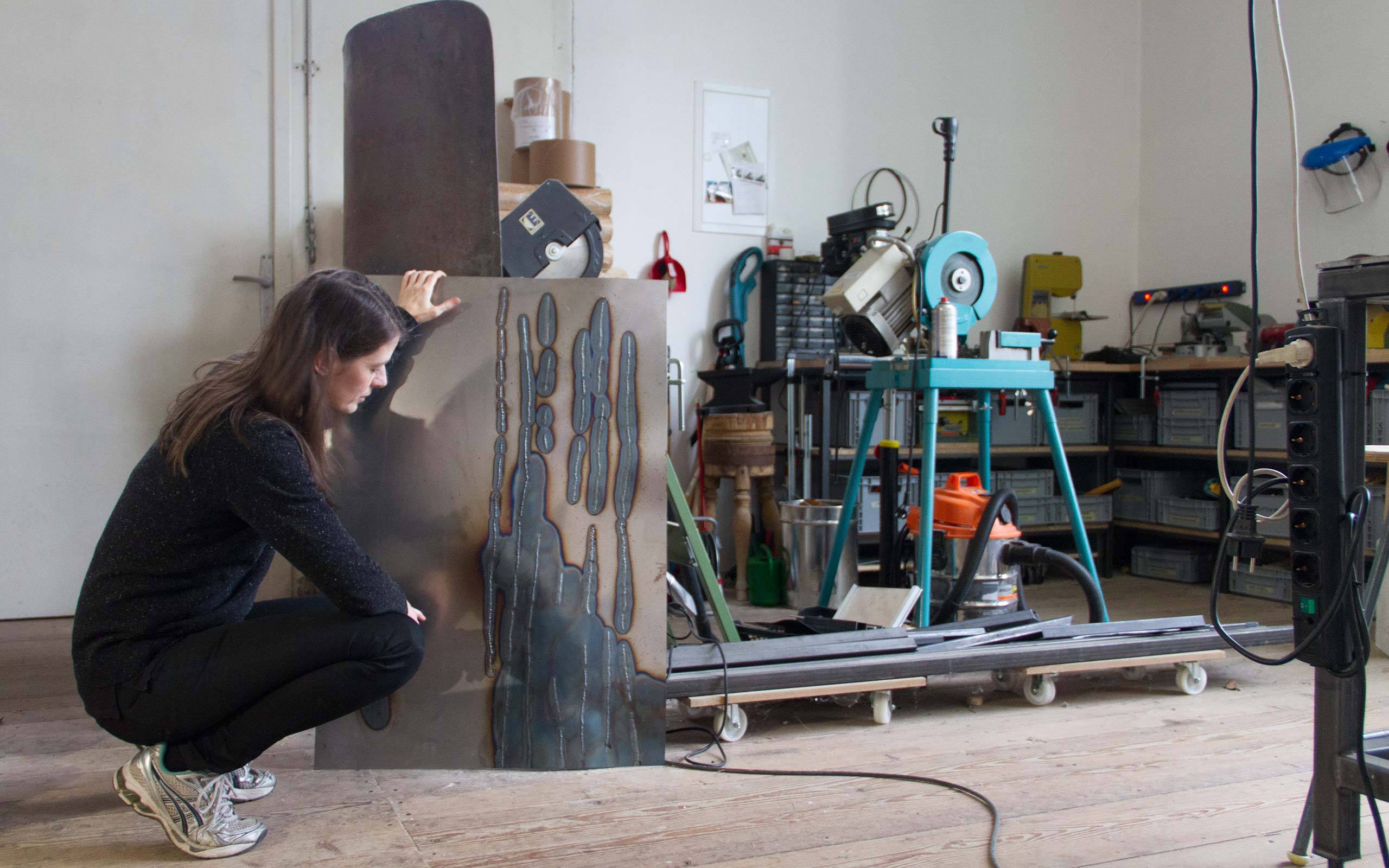
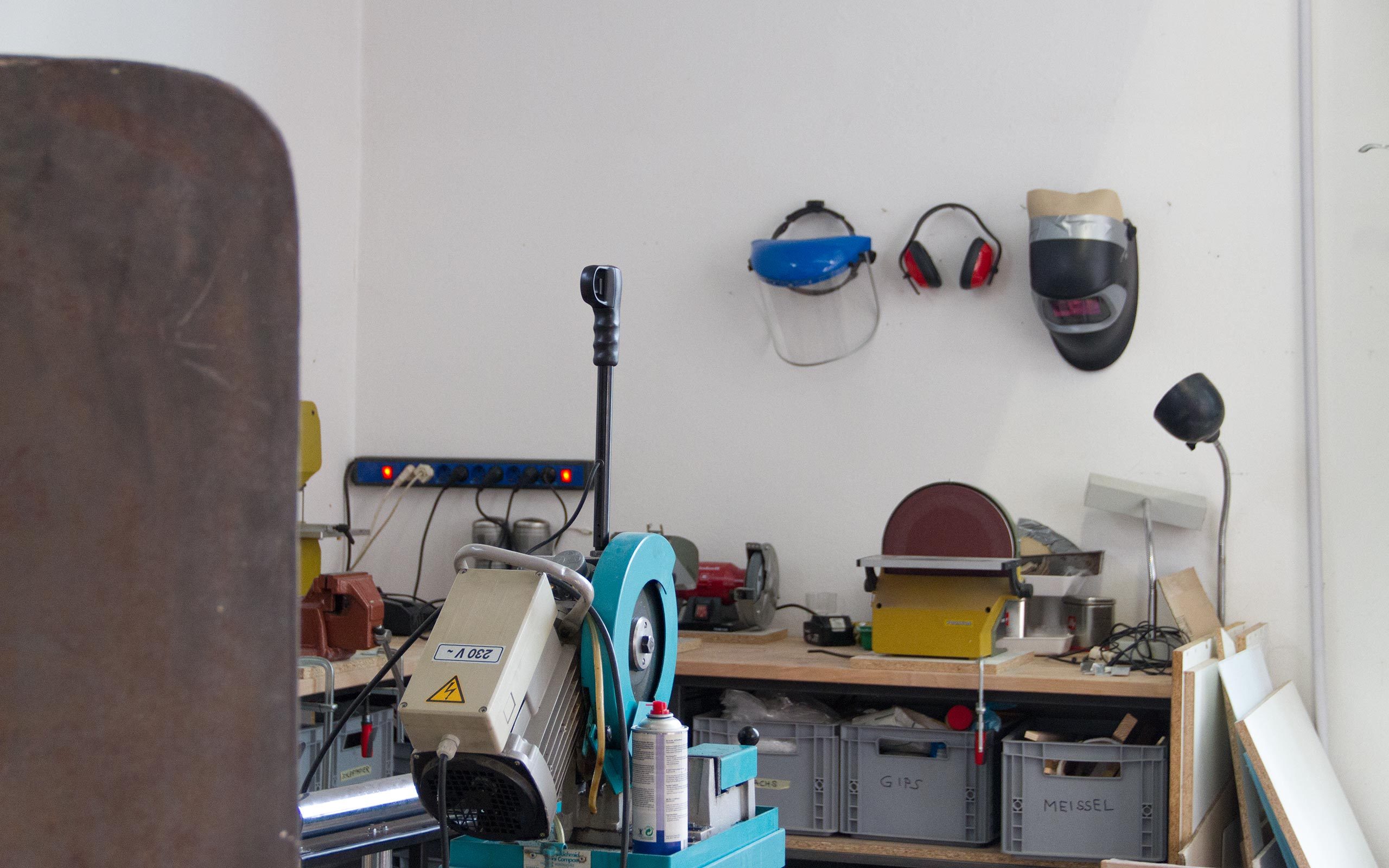
In your work revers of 2010 there occurred a contact between art and life or between man and machine. Can you speak about this work and describe your intention?
In revers it was important to me to turn the exhibition situation around. In my artistic work I often connect my installations with the house, the institution. In revers I multiplied the exhibition situation with minus one and attached the visitors to my installation. Thus a temporary blood donor center developed which lends the work a performative character and attracted two different visitor streams bringing both museum visitors and blood donors into contact with each other.
Linking man and machine can according to Donna Haraway be considered as a last resort in order to conquer limitations and create new challenges. What possibilities of social change do you see in the connection between man and machine?
From a present day perspective, Donna Haraway has used the concept of a machine as a instrument to prize apart traditional thought patterns and in doing so to open the way for progressive social ideas. I don’t see the proverbial connection between man and machine as a hybrid being, but I see the complementation of our physical capabilities through the use of technical, non-invasive consumer goods. The computer as the ever-present opposite, complements and supports our capacities, however, the interaction shows a highly addictive character. The computer, the smart fleet of “personal devices” and the net, which they access, must be considered as well as instruments of manipulation and data harvesting.
In the art world women are still less well represented in large institutions and galleries than men. What is your position regarding this topic?
This must certainly be changed, and we must actively strive to change it! Generations of women have worked unremittingly to draw attention to these grievances and to this discrimination. We and future generations must not be satisfied with what has been so far achieved. It will certainly take time for natural gender equality to be accomplished, it is therefore important that women act in solidarity, in establishing networks and promoting this momentous issue on every possible occasion. Men, too, are called upon to support vigorously the striving for sustained gender equality in all areas; it won’t function without gender solidarity.
Has there been an artistic project on your mind that is so complex that you haven’t been able to realize it until now?
For larger projects I work with the institution, i.e., the building as a material. However, this does not occur without exception. Currently I work on ideas and sketch possible scenarios, whether they can then be applied as intended is uncertain. In trying to act in accordance with the laws of sustainability, I work closely with the institution toward a synergy through the conservation of resources. Apropos resources: I would like to realize a large project in conjunction with an energy provider company, i.e. I want to go directly to the source.
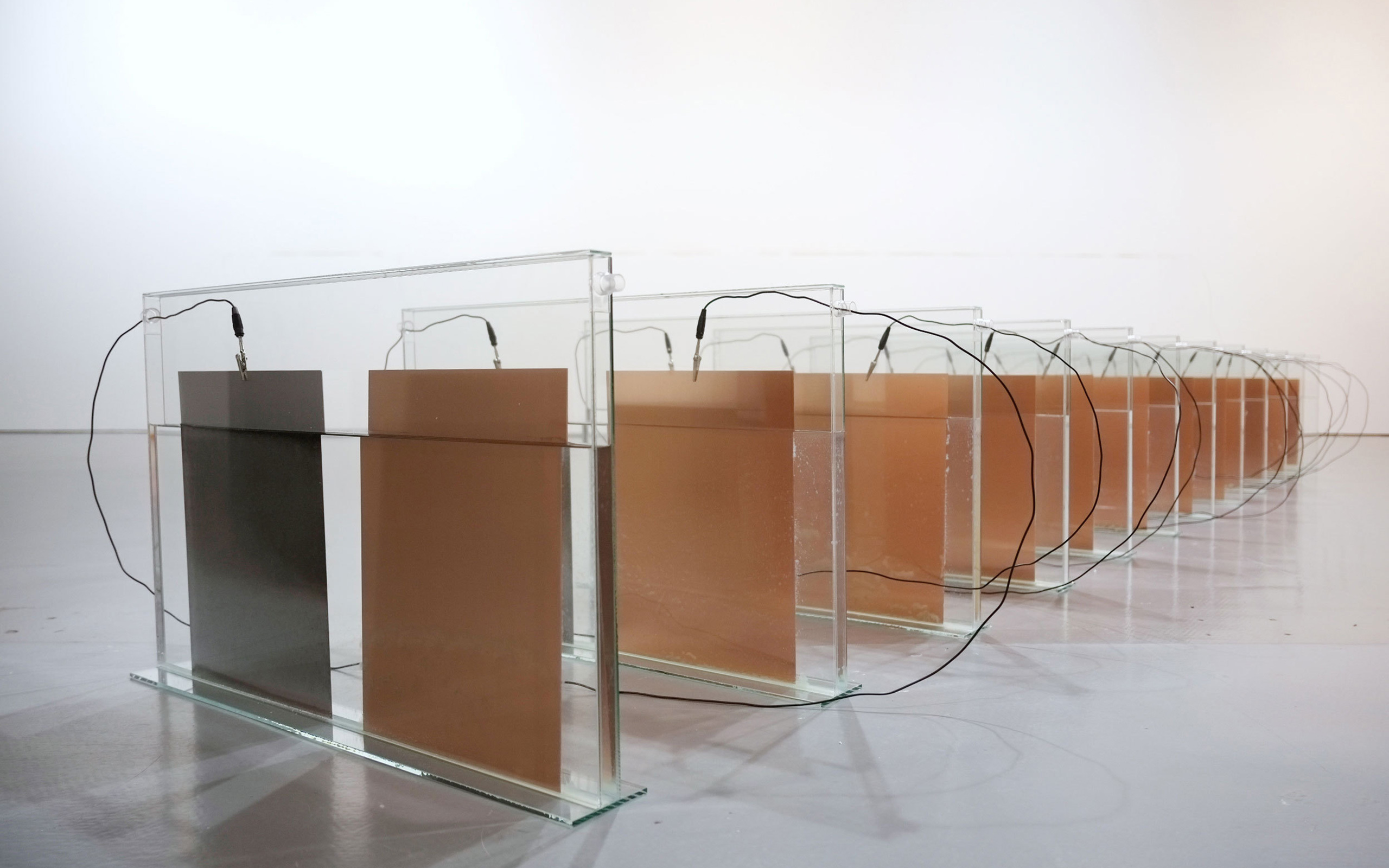
Judith Fegerl, reservoir, 2010, Kunstverein Friedrichshafen
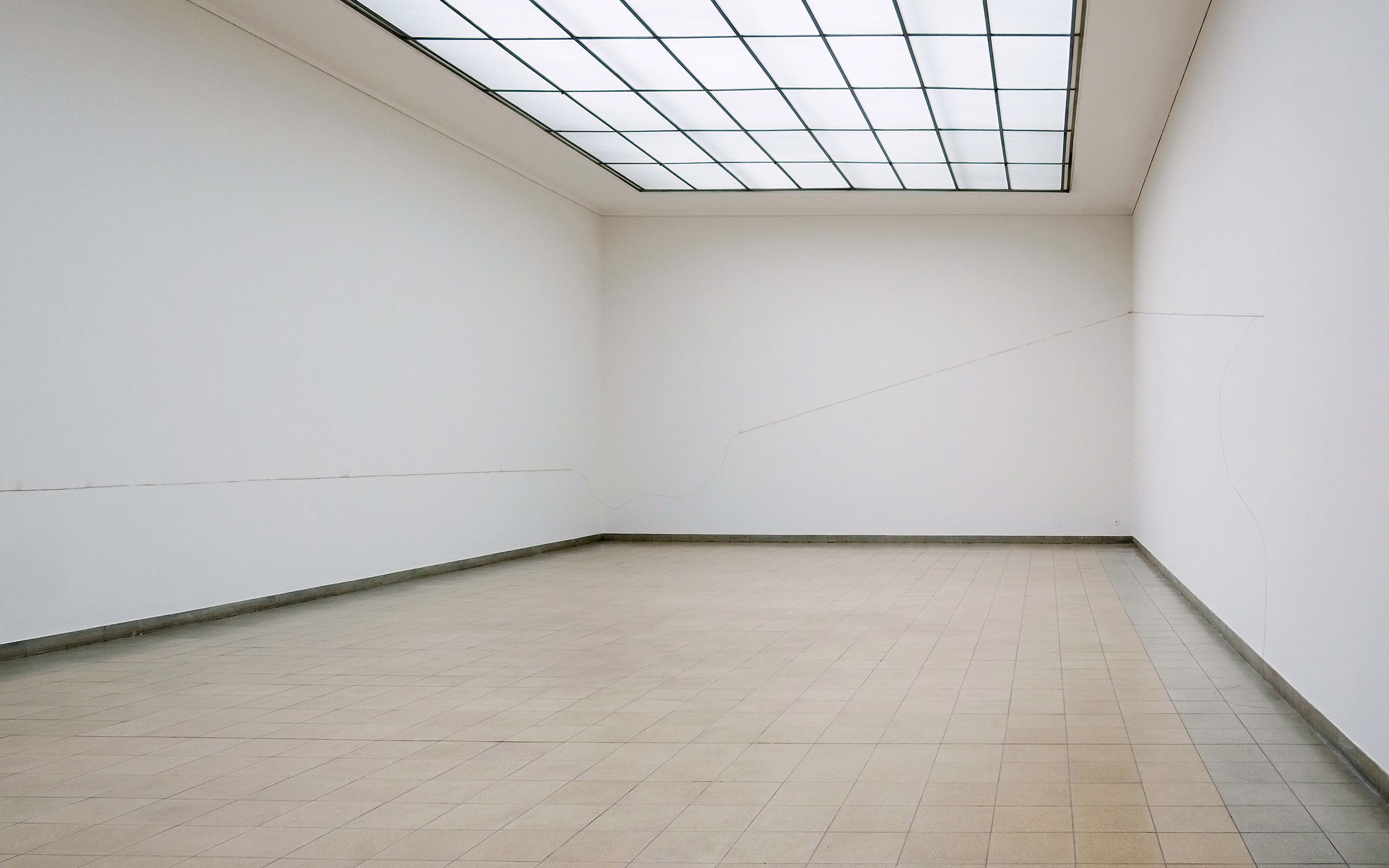
Judith Fegerl, cauter, 2015, Kunsthaus Glarus
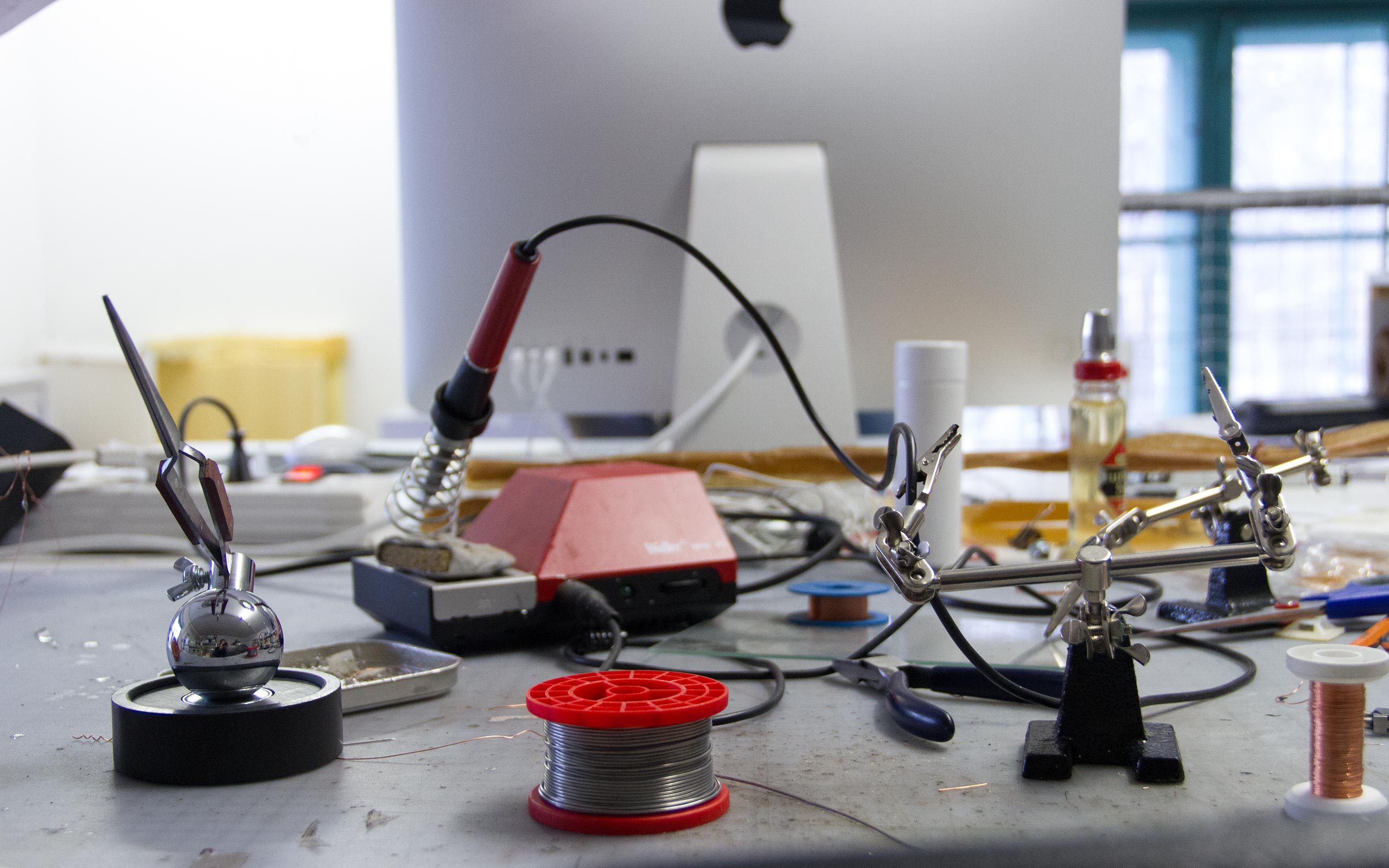
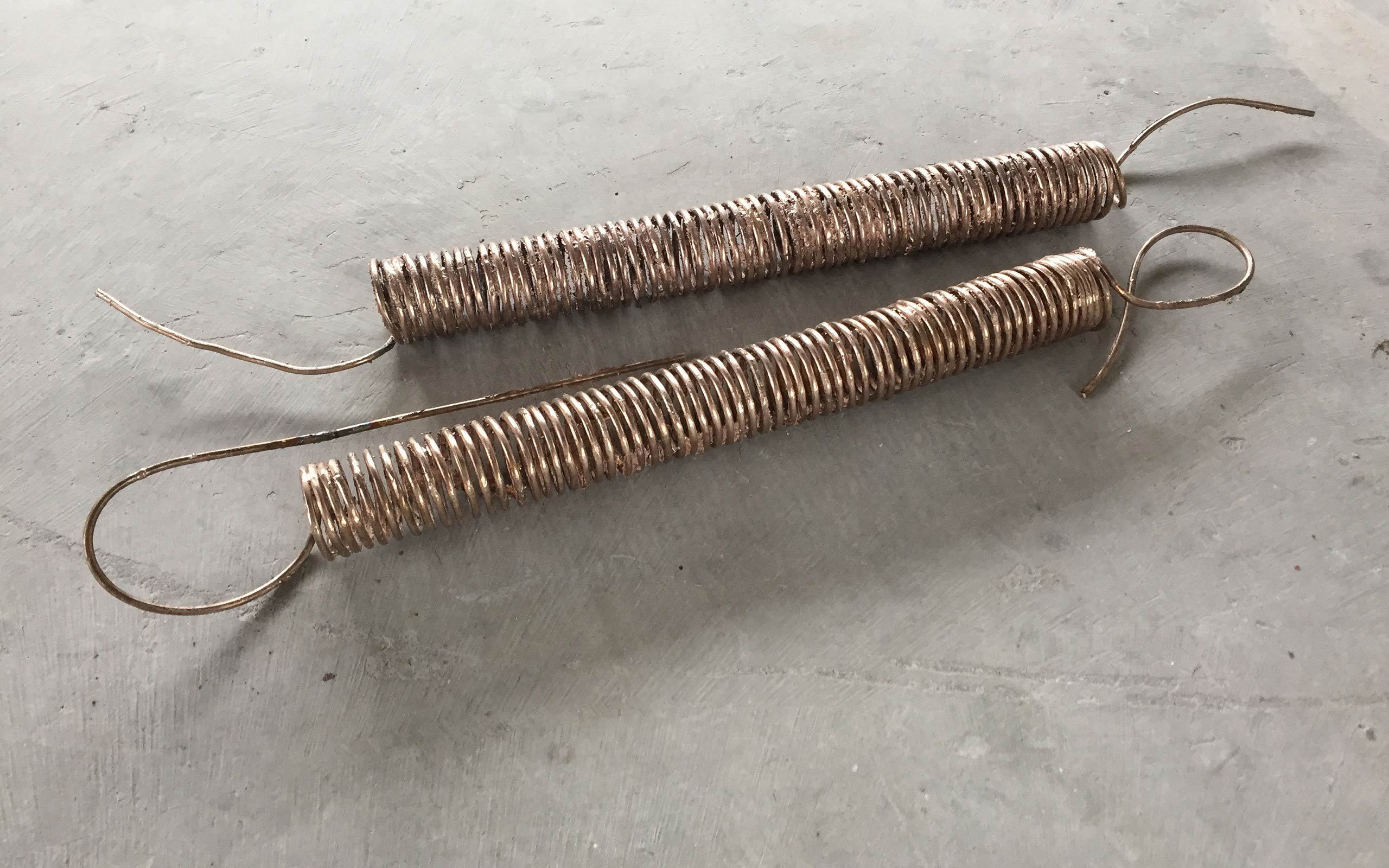
Judith Fegerl, Ohne Titel, 2017, Bronze castings of tensioned tension springs, 200 x 6 cm
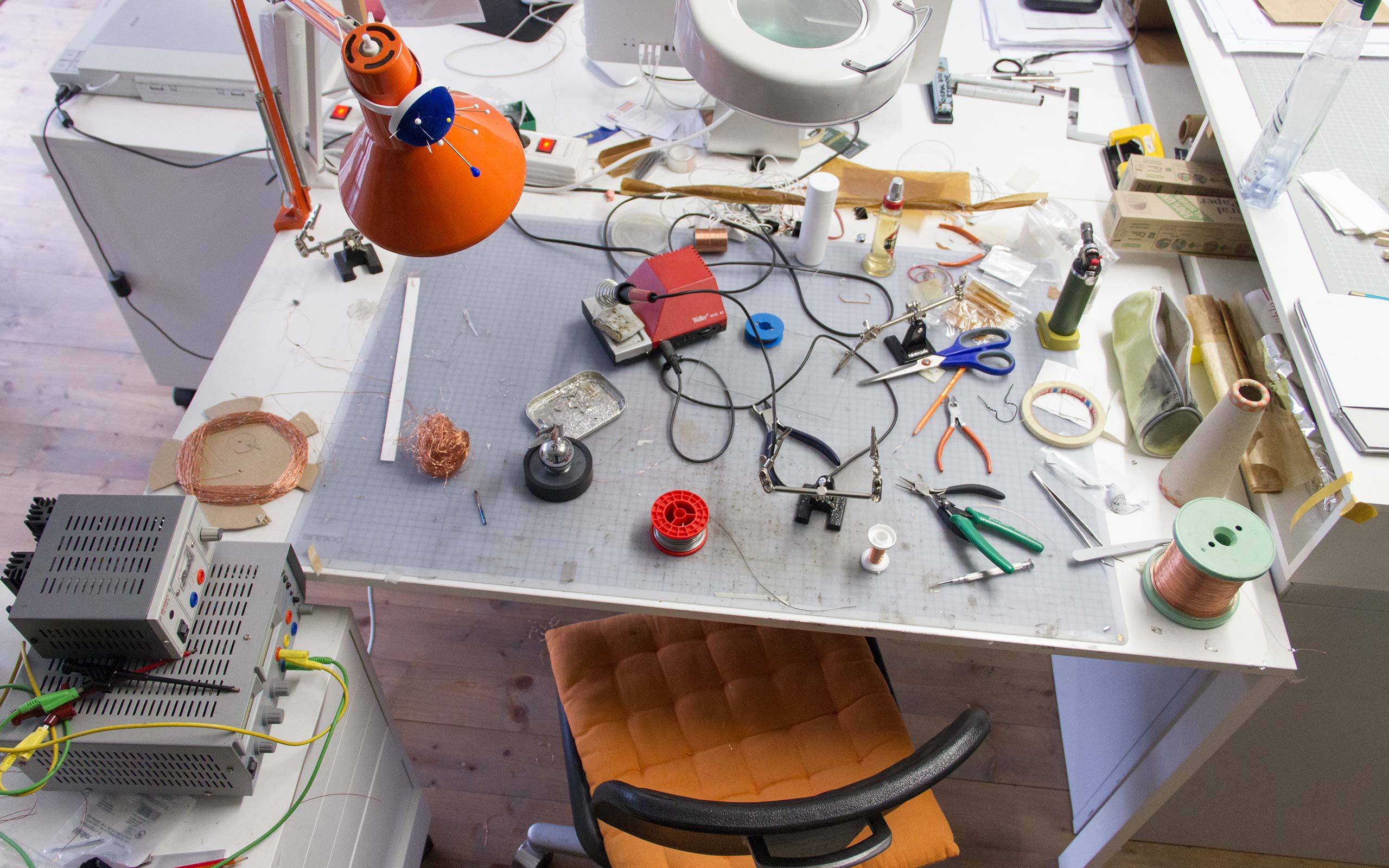
Interview: Alexandra-Maria Toth
Photos: Florian Langhammer


